Abstract
A large number of factors have been identified which seem to predispose an individual to develop melanoma. Black-skinned individuals rarely have malanomas, but this variety of tumors is common in red-haired or blond subjects. The incidence of melanoma is particularly high if such fair-skinned subjects are exposed for long perods of time to intense sunlight. Nevi, congenital or acquired, can degenerate into melanomas. In some families, many of the family members develop multiple nevi that are unusually large and red in color. All of these appear to degenerate into melanomas with time. Nature has provided other examples of genetic factors which induce melanomas, i.e., the melanomas which form in the platyfish and Sinclair miniature swine.
Full text
PDF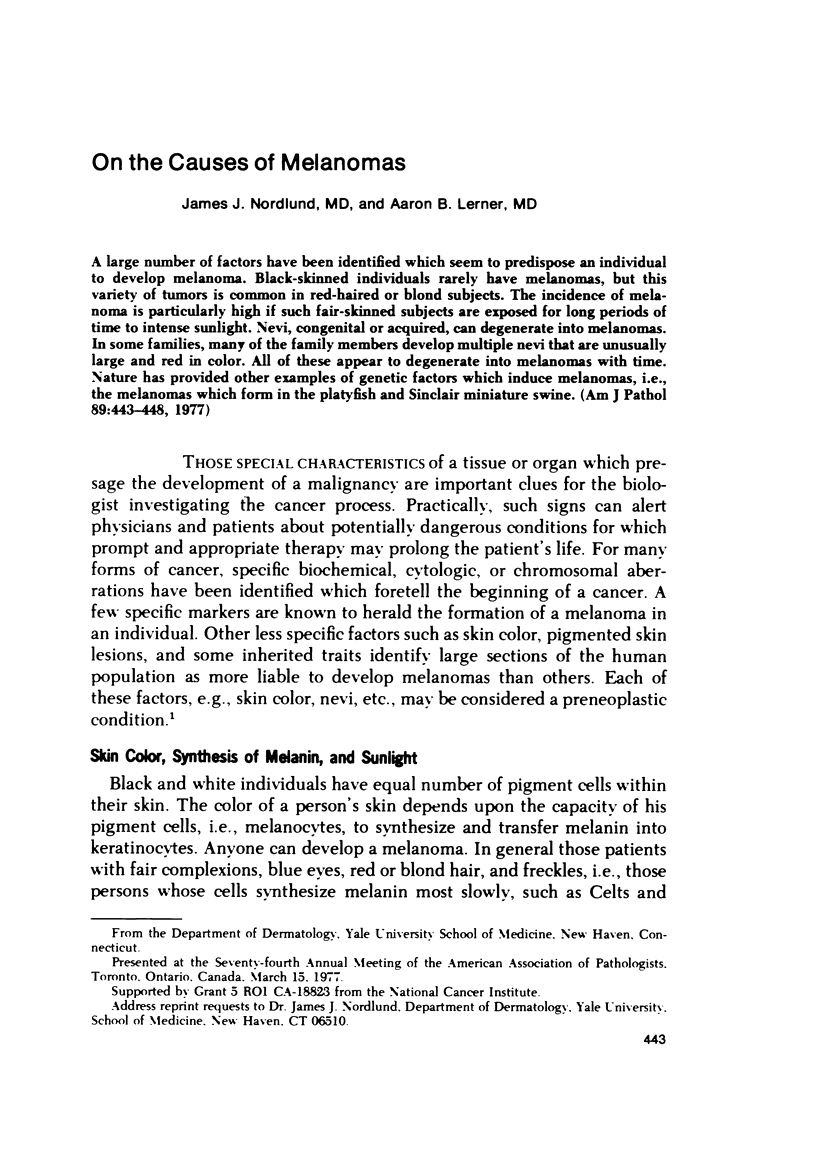
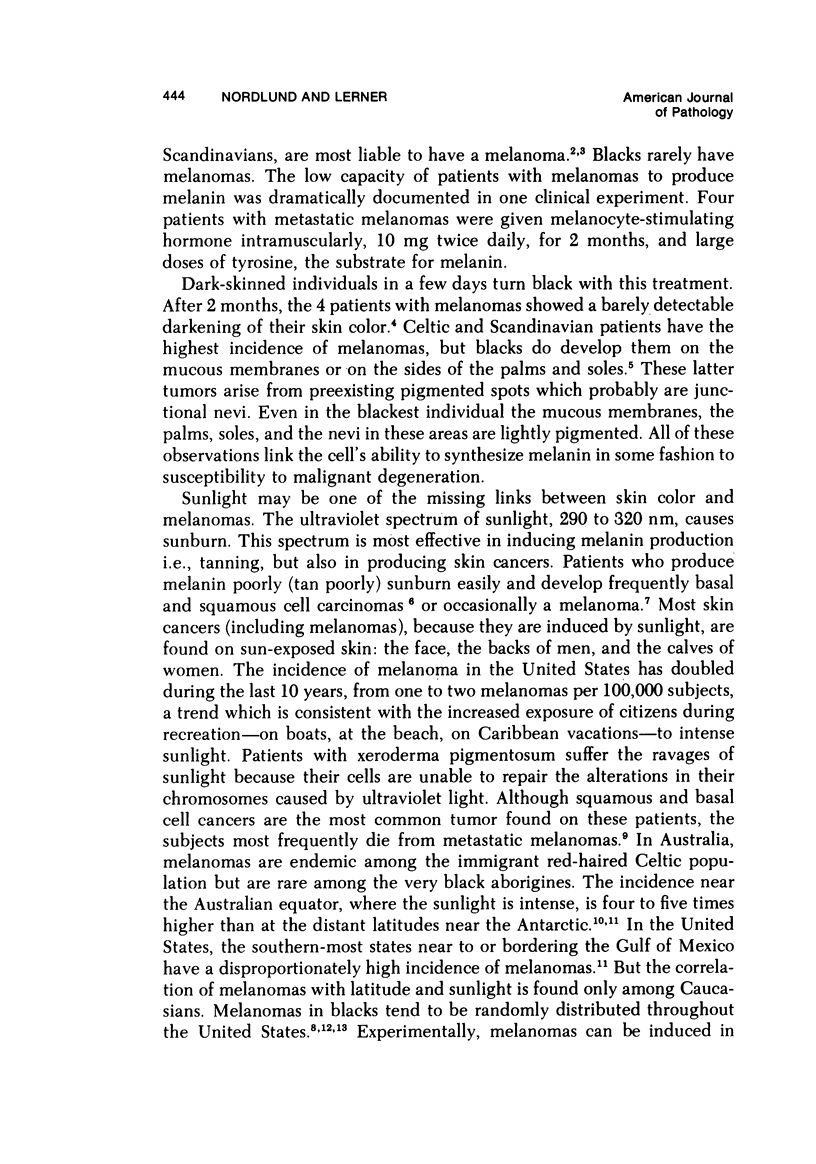
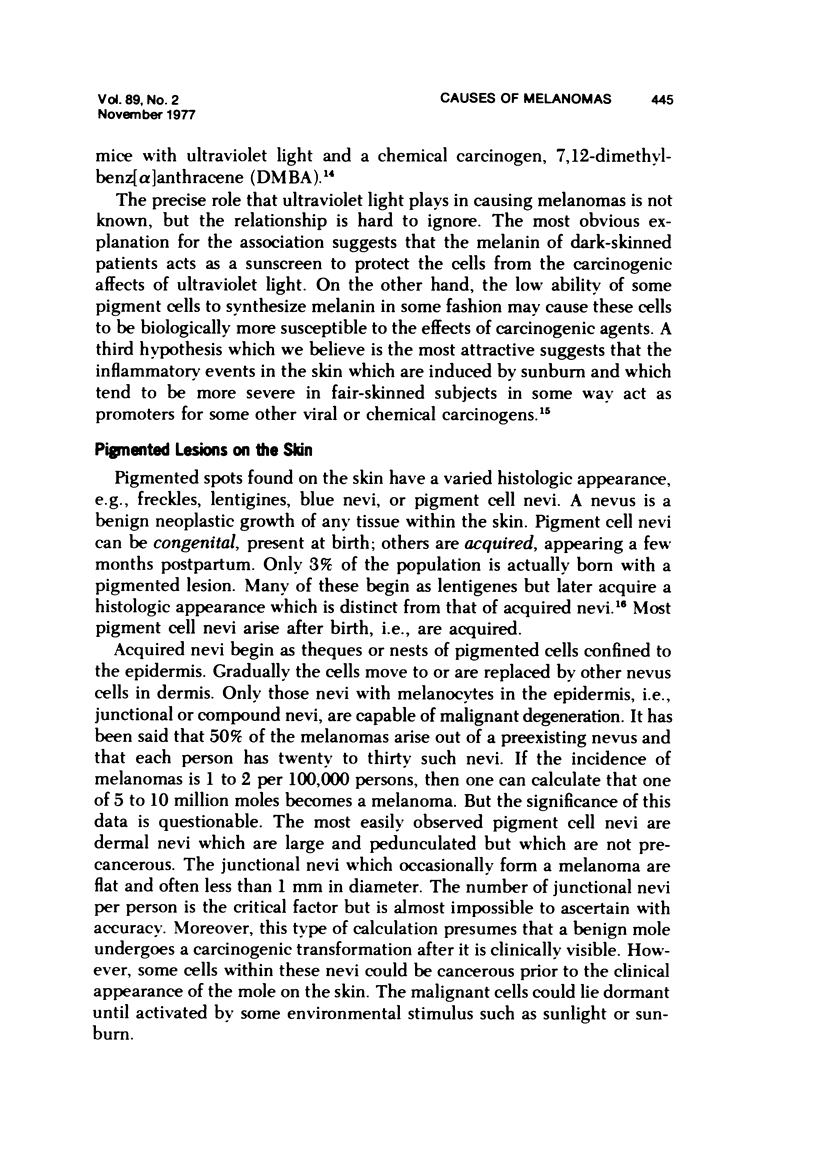
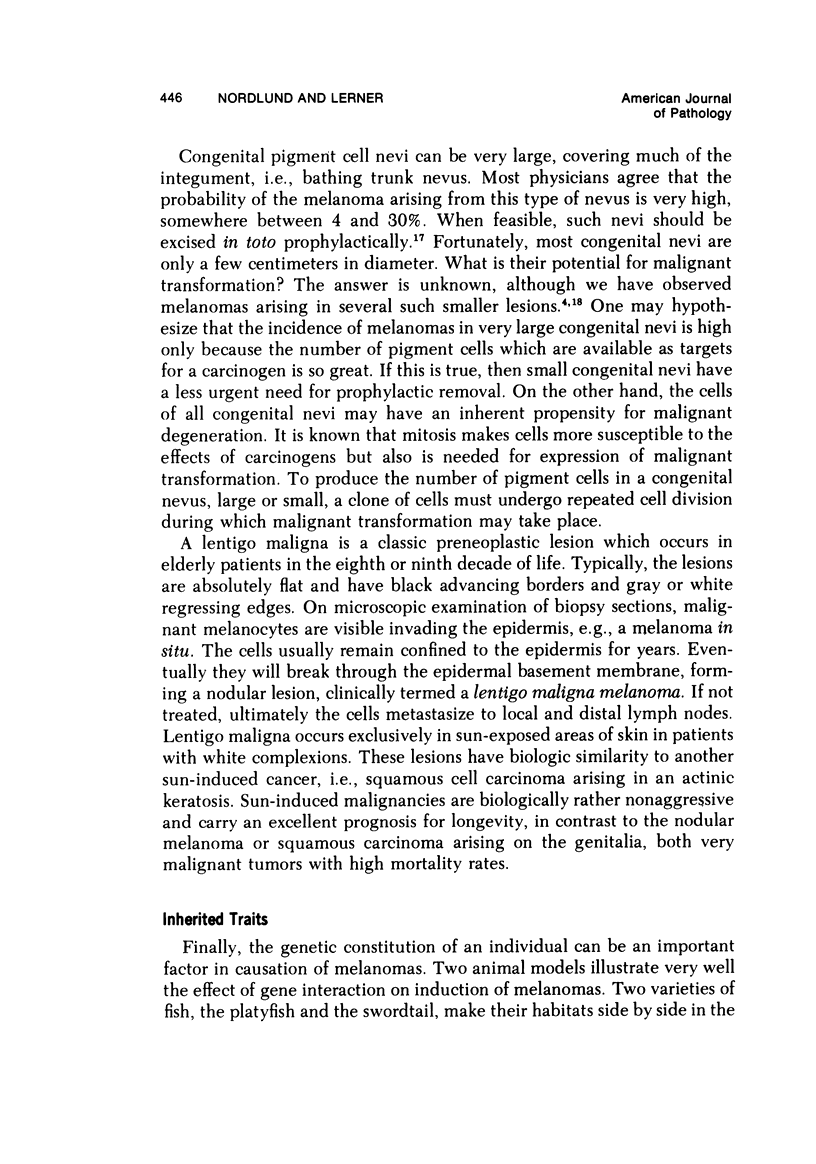
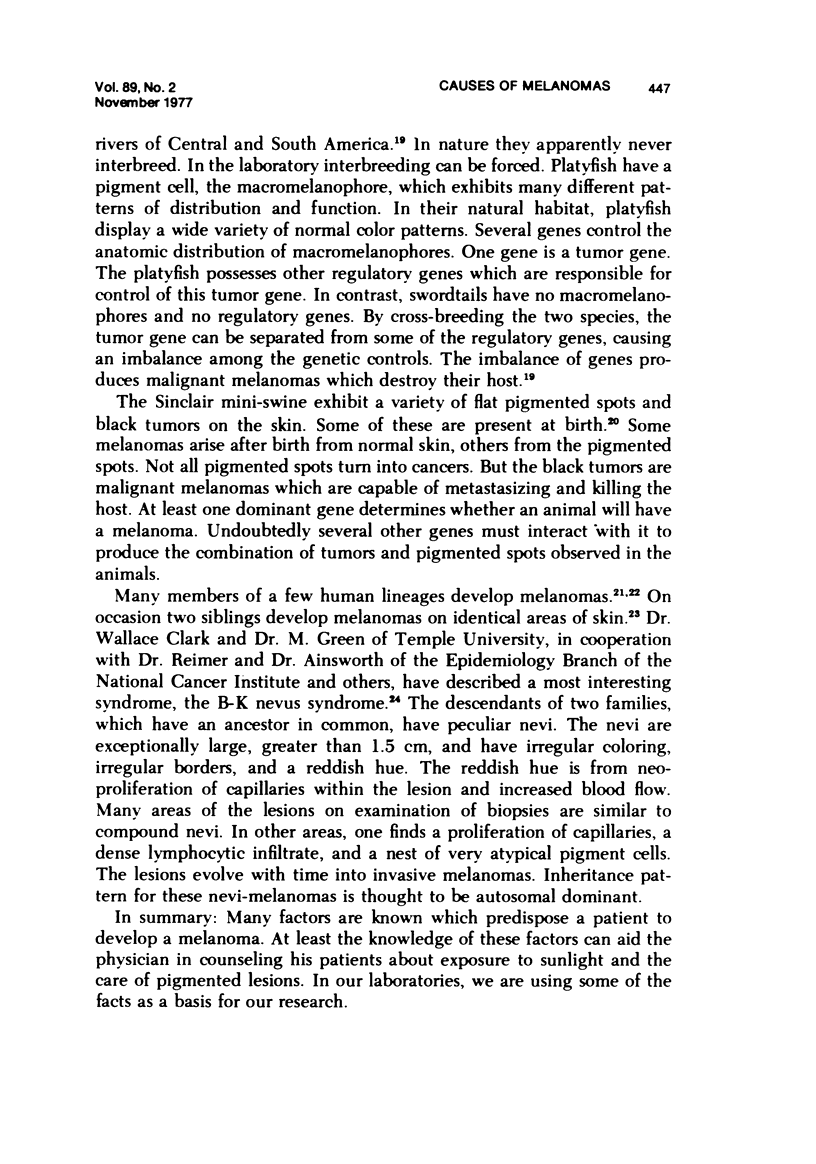
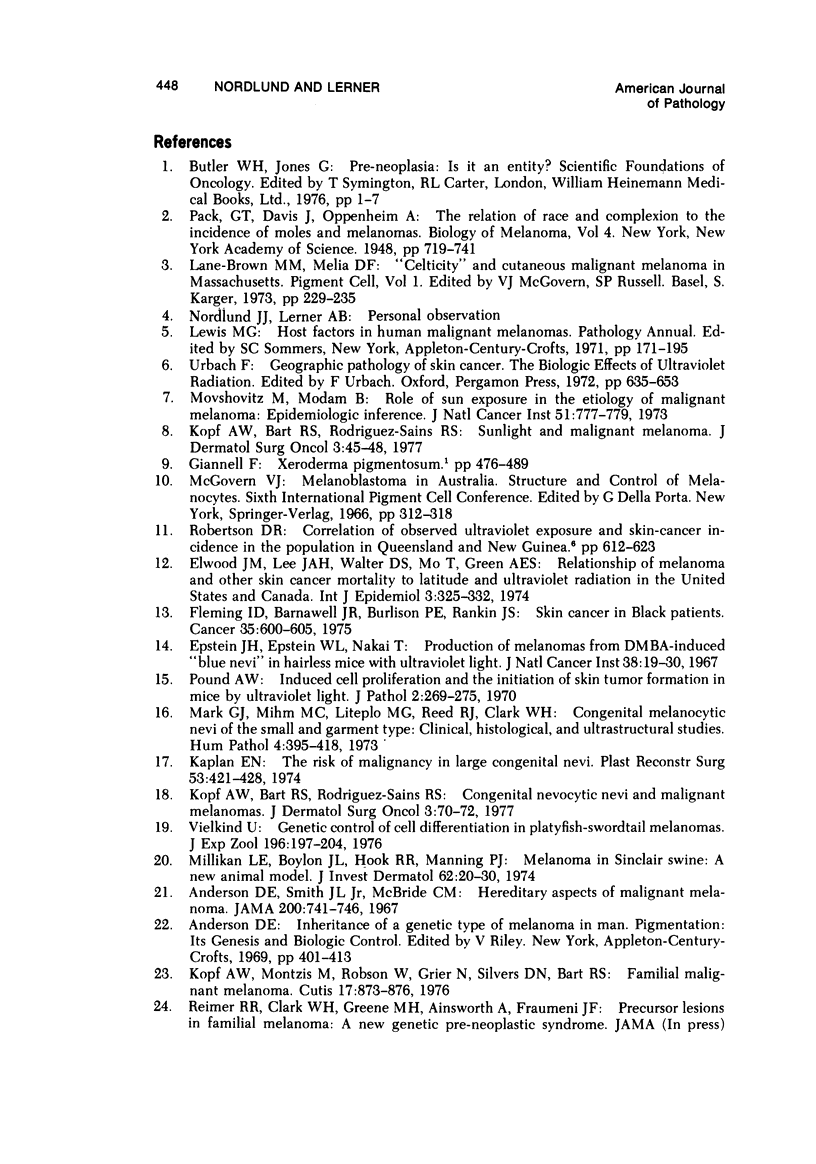
Selected References
These references are in PubMed. This may not be the complete list of references from this article.
- Anderson D. E., Smith J. L., Jr, McBride C. M. Hereditary aspects of malignant melanoma. JAMA. 1967 May 29;200(9):741–746. [PubMed] [Google Scholar]
- Elwood J. M., Lee J. A., Walter S. D., Mo T., Green A. E. Relationship of melanoma and other skin cancer mortality to latitude and ultraviolet radiation in the United States and Canada. Int J Epidemiol. 1974 Dec;3(4):325–332. doi: 10.1093/ije/3.4.325. [DOI] [PubMed] [Google Scholar]
- Fleming I. D., Barnawell J. R., Burlison P. E., Rankin J. S. Skin cancer in black patients. Cancer. 1975 Mar;35(3):600–605. doi: 10.1002/1097-0142(197503)35:3<600::aid-cncr2820350309>3.0.co;2-3. [DOI] [PubMed] [Google Scholar]
- Kaplan E. N. The risk of malignancy in large congenital nevi. Plast Reconstr Surg. 1974 Apr;53(4):421–428. doi: 10.1097/00006534-197404000-00007. [DOI] [PubMed] [Google Scholar]
- Kopf A. W., Mintzis M., Grier R. N., Silvers D. N., Bart R. S. Familial malignant melanoma. Cutis. 1976 May;17(5):873–876. [PubMed] [Google Scholar]
- Lewis M. G. Host factors in human malignant melanoma. Pathol Annu. 1971;6:171–195. [PubMed] [Google Scholar]
- Mark G. J., Mihm M. C., Liteplo M. G., Reed R. J., Clark W. H. Congenital melanocytic nevi of the small and garment type. Clinical, histologic, and ultrastructural studies. Hum Pathol. 1973 Sep;4(3):395–418. doi: 10.1016/s0046-8177(73)80101-7. [DOI] [PubMed] [Google Scholar]
- Millikan L. E., Boylon J. L., Hook R. R., Manning P. J. Melanoma in Sinclair swine: a new animal model. J Invest Dermatol. 1974 Jan;62(1):20–30. doi: 10.1111/1523-1747.ep12676714. [DOI] [PubMed] [Google Scholar]
- Movshovitz M., Modan B. Role of sun exposure in the etiology of malignant melanoma: epidemiologic inference. J Natl Cancer Inst. 1973 Sep;51(3):777–779. doi: 10.1093/jnci/51.3.777. [DOI] [PubMed] [Google Scholar]
- Pound A. W. Induced cell proliferation and the initiation of skin tumour formation in mice by ultraviolet light. Pathology. 1970 Oct;2(4):269–275. doi: 10.3109/00313027009077141. [DOI] [PubMed] [Google Scholar]
- Vielkind U. Genetic control of cell differentiation in platyfish-swordtail melanomas. J Exp Zool. 1976 May;196(2):197–204. doi: 10.1002/jez.1401960207. [DOI] [PubMed] [Google Scholar]


